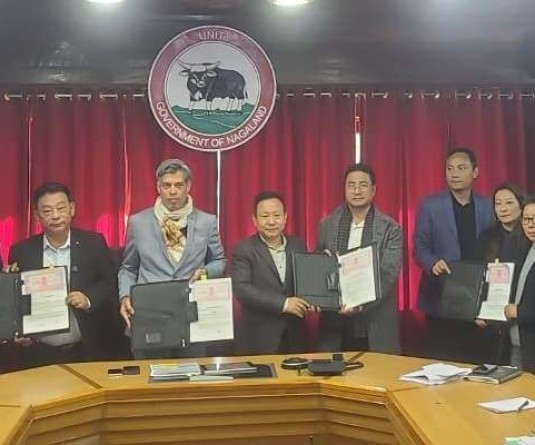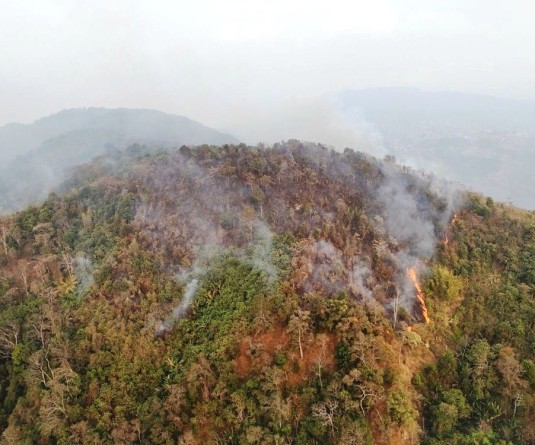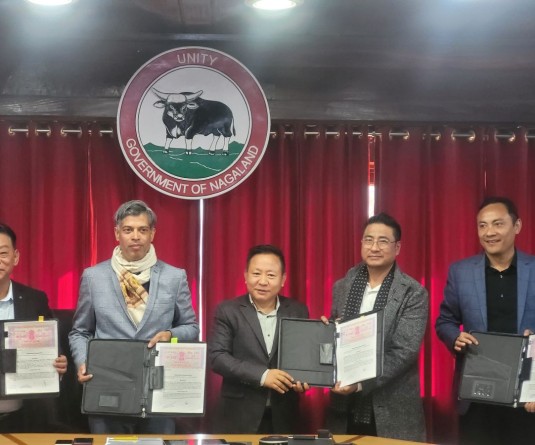
Morung Express News
Kohima | November 30
Nagaland, with the second highest HIV adult prevalence rate in India at 1.34% according to the Nagaland State AIDS Control Society (NSACS), continues to face significant public health challenges despite years of progress in combating the virus. As the state prepares to observe World AIDS Day on December 1, the theme for this year, “Take the Rights Path,” highlights the ongoing struggles of people living with HIV (PLHIV) and the societal stigma they face.
As per the data obtained from NSACS, in the current financial year (April 2024 to October 2024), a total of 125,432 individuals were tested for HIV in the state, with 1,331 testing positive. Notably, the annual rate of new HIV infections decreased from 1,096 in 2022 to 1,008 in 2023, indicating a -37.86% reduction since 2010, as per NACO HIV estimates.
However, major concern in the demographic data HIV prevalence reveals adults aged 25-34 years account for the highest percentage (38.48%) of positive cases, while men represent the majority of cases (62.89%), followed by women (37.06%) and transgender individuals (0.05%). (See graphs)
Notably, the state has seen a reduction in new HIV infections over recent years. According to the National AIDS Control Organization (NACO) estimates, new HIV infections dropped from 1,096 in 2022 to 1,008 in 2023, marking a -37.86% reduction since 2010. Testing rates in the state have also significantly increased, from 53,162 in 2020-21 to 188,869 in 2023-24, with 125,432 tested already this year.
Equally promising is the rise in the number of people receiving antiretroviral therapy (ART), with 14,292 currently enrolled in ART programs compared to 10,617 in 2021-22. However, AIDS-related deaths in the state remain a concern, although they have decreased substantially by -76.22% since 2010, with 214 deaths recorded in 2023.
Calls for more comprehensive strategies
Despite these gains, experts continue to call for more comprehensive strategies to address the persistent challenges of HIV and AIDS in the state. Speaking with The Morung Express, Ketholelie Angami, President of the ARK Foundation in Kohima, expressed concern over the rising incidence of new HIV cases among vulnerable adolescent populations.
Angami highlighted that the present trend has seen new HIV case incidence among the young and vulnerable adolescent populations with sexual route of transmission being the highest among all new HIV infections. The number of cases/ incidents is ever increasing with a cumulative number of 27,010 PLHIV registered for HIV Care till March 2024.
He emphasized that the state's approach must shift towards a more integrated response, especially as more people "age with HIV." Angami also underscored the need to address advanced HIV disease (AHD) through treatment literacy and community engagement, particularly highlighting the role of tuberculosis (TB) as a leading opportunistic infection in HIV patients.
“The old stereotype approach of mass awareness among the general community needs to be revived, while also addressing the specific health and support needs of the PLHIV community,” Angami stated. He also pointed out that tuberculosis, a preventable condition, continues to affect PLHIV in the state, and urged the community to take advantage of the newer, shorter-course TB Preventive Therapy (TPT) now available.
Govt must allocate adequate budget
While acknowledging the significant role of national and donor funding organizations like the National AIDS Control Organization (NACO) GoI and others for HIV associated programs, Abou Mere, Director of Kripa Foundation, stressed that Nagaland must take greater ownership of the HIV response. He called for the state government to provide the necessary budgetary allocations and political support to ensure sustainable HIV programs.
Meanwhile, paying tribute to those who lost their lives to the HIV epidemic and the community who continue to take forward the HIV intervention, Mere acknowledged the role of the Naga Mothers' Association in addressing substance use and HIV during the state's turbulent years, which helped reduce HIV prevalence among people who inject drugs.
However, Mere warned that the state's efforts must be bolstered, especially as HIV prevalence and new infections—along with concerns over viral hepatitis C—remain critical challenges.
Age distribution among the HIV Positive clients:
Age | % |
14 years | 3.42% |
15 – 24 years | 19.04% |
25 – 34 years | 38.48% |
35 – 49 years | 31.41% |
50 years | 7.65% |
Male | 62.89% |
Female | 37.06% |
TG | 0.05% |






